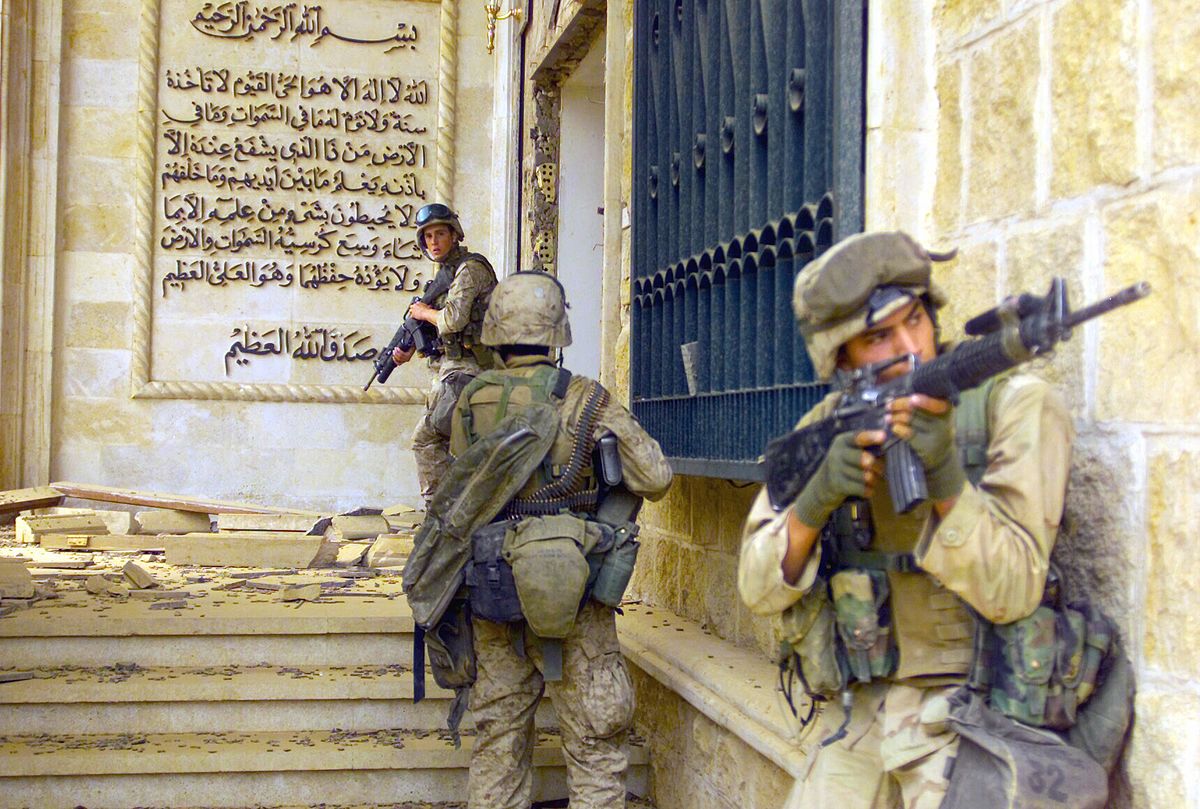
2003 Invasion of Iraq
IraqThe United States-led invasion of Iraq, marking the beginning of the Iraq War, started on 19 March 2003 with an air campaign, followed by a ground invasion on 20 March. The initial invasion phase lasted just over a month,[61] concluding with U.S. President George W. Bush's declaration of the end of major combat operations on 1 May 2003. This phase involved troops from the U.S., U.K., Australia, and Poland, with the coalition capturing Baghdad on 9 April 2003 after a six-day Battle of Baghdad. The Coalition Provisional Authority (CPA) was established as a transitional government leading to Iraq's first parliamentary election in January 2005. U.S. military forces remained in Iraq until 2011.[62]
The coalition deployed 160,000 troops during the initial invasion, predominantly American, with significant British, Australian, and Polish contingents. The operation was preceded by the assembly of 100,000 U.S. troops in Kuwait by 18 February. The coalition received support from the Peshmerga in Iraqi Kurdistan.
The stated goals of the invasion were to disarm Iraq of weapons of mass destruction (WMD), end Saddam Hussein's support for terrorism, and free the Iraqi people. This was despite the UN inspection team, led by Hans Blix, finding no evidence of WMDs just before the invasion.[63] The invasion followed Iraq's failure to comply with a "final opportunity" to disarm, per U.S. and British officials.[64]
Public opinion in the U.S. was divided: a January 2003 CBS poll indicated majority support for military action against Iraq, but also a preference for a diplomatic solution and concerns about increased terrorism threats due to the war. The invasion faced opposition from several U.S. allies, including France, Germany, and New Zealand, who questioned the presence of WMDs and the justification for war. Post-war findings of chemical weapons, dating back to before the 1991 Gulf War, did not support the invasion rationale.[65] UN Secretary-General Kofi Annan later deemed the invasion illegal under international law.[66]
Global anti-war protests occurred before the invasion, with a record-setting rally in Rome and millions participating worldwide.[67] The invasion commenced with an airstrike on Baghdad's Presidential Palace on 20 March, followed by a ground incursion into Basra Governorate and air strikes across Iraq. Coalition forces quickly defeated the Iraqi military and occupied Baghdad on 9 April, with subsequent operations securing other regions. Saddam Hussein and his leadership went into hiding, and on 1 May, Bush announced the end of major combat operations, transitioning to a military occupation period.
